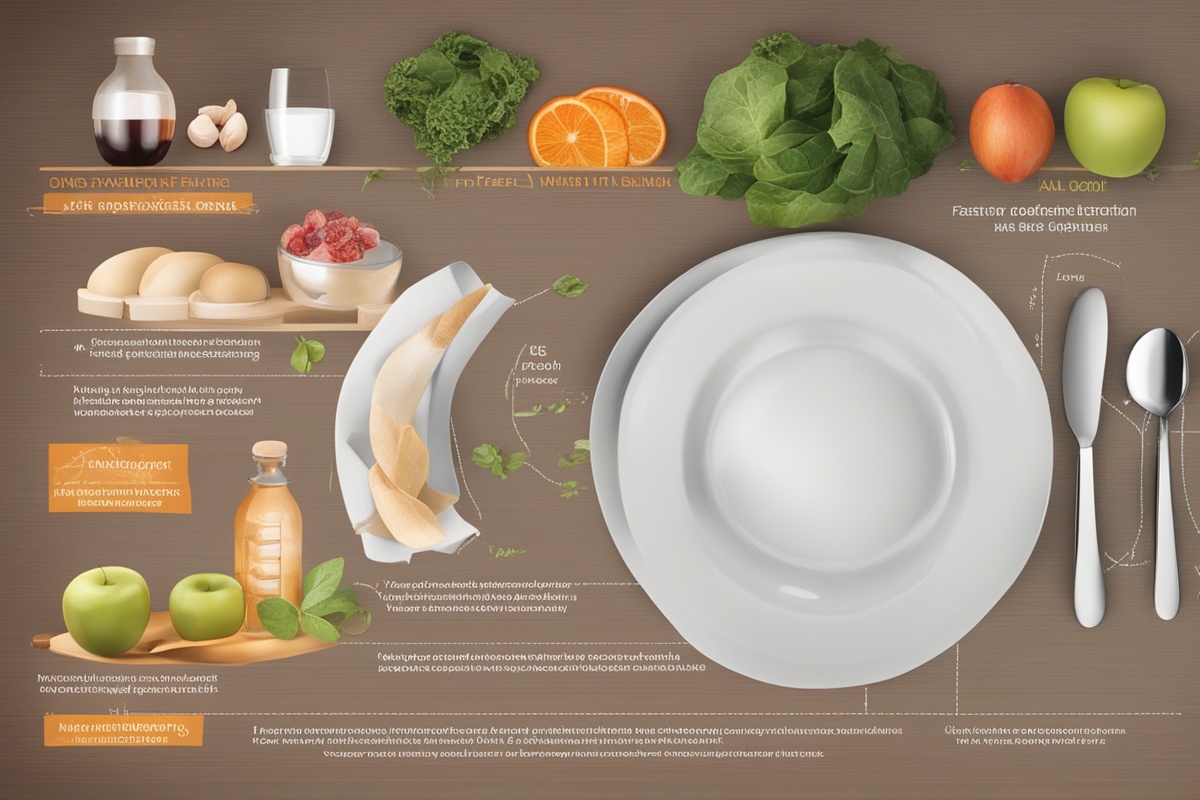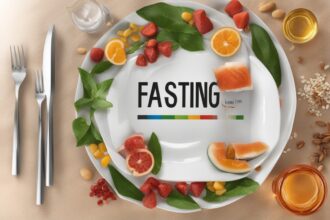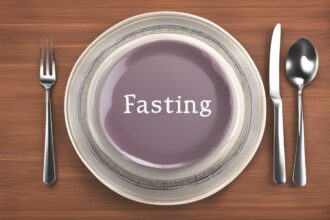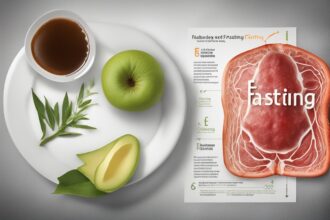Hey there, health enthusiasts! If you’re intrigued by the idea of health fasting and its potential to transform your well-being, you’re in for a treat. Today, we’re diving deep into the fascinating connection between fasting and oxidative stress—a key factor in aging and chronic disease. Fasting, whether it’s intermittent fasting, time-restricted eating, or prolonged fasts, isn’t just about skipping meals; it’s a powerful tool that may help your body combat cellular damage and promote longevity. Let’s unpack the science, explore practical ways to incorporate fasting into your life, and understand how it can reduce oxidative stress to support a healthier you. Stick with me as we break it all down!
What Is Oxidative Stress, and Why Should You Care?
Before we dive into how health fasting ties into oxidative stress, let’s get clear on what oxidative stress actually is. Simply put, it’s an imbalance in your body between harmful free radicals and the antioxidants that neutralize them. Free radicals are unstable molecules produced during normal metabolism or from external sources like pollution and unhealthy diets. When they outnumber antioxidants, they can damage cells, proteins, and DNA, contributing to aging, inflammation, and diseases like cancer, diabetes, and heart disease (Halliwell, 2007).
Why does this matter? Well, oxidative stress is like rust on a car—it slowly wears down your body over time. The good news is that lifestyle choices, including dietary practices like fasting for health, can help tip the balance back in your favor. By reducing oxidative damage, you’re not just fighting aging; you’re potentially lowering your risk for a host of health issues. So, how does fasting come into play? Let’s find out.
How Health Fasting Impacts Oxidative Stress
Fasting, particularly intermittent fasting or periodic extended fasts, has gained attention for its ability to trigger cellular repair processes that combat oxidative stress. When you fast, your body shifts from using glucose as its primary fuel to burning stored fats through a process called ketosis. This metabolic switch doesn’t just help with weight management; it also reduces the production of free radicals and enhances antioxidant defenses (Mattson & Wan, 2005).
Studies suggest that fasting activates pathways like autophagy, where cells clean out damaged components, and boosts the production of protective proteins that shield against oxidative damage. For instance, research has shown that intermittent fasting can lower markers of oxidative stress in both animals and humans (Longo & Mattson, 2014). Essentially, health fasting acts like a reset button for your cells, helping them resist the wear and tear of daily life. But there’s more to it—let’s look at the specific mechanisms at play.
The Science Behind Fasting and Cellular Protection
Digging deeper into the science, fasting influences several biological pathways that directly tackle oxidative stress. One key player is the activation of sirtuins, a family of proteins linked to longevity and stress resistance. Sirtuins are ramped up during calorie restriction and fasting, and they help repair DNA and reduce inflammation—both of which are tied to oxidative damage (Guarente, 2013).
Another mechanism is the reduction of insulin levels during fasting. High insulin can promote inflammation and oxidative stress, whereas fasting helps stabilize blood sugar and lower insulin resistance, creating a less hostile environment for your cells (Johnson et al., 2006). Additionally, fasting increases the production of brain-derived neurotrophic factor (BDNF), which not only supports brain health but also has antioxidant effects throughout the body (Mattson, 2008). These processes highlight why fasting for health is more than a trend—it’s a science-backed strategy for cellular resilience.
Practical Benefits of Health Fasting for Oxidative Stress
Now that we’ve covered the “why” behind fasting and oxidative stress, let’s talk about the tangible benefits you might experience by adopting health fasting. Beyond the cellular level, fasting can lead to real-world improvements in how you feel and function. Here are some key perks backed by research and anecdotal evidence:
- Improved Energy Levels: By reducing oxidative stress, fasting may help your mitochondria (the powerhouses of your cells) work more efficiently, leaving you feeling more energized.
- Better Skin Health: Oxidative stress contributes to skin aging, and fasting’s antioxidant boost could help reduce wrinkles and improve complexion over time.
- Enhanced Immune Function: Lower oxidative damage means less strain on your immune system, potentially helping you fend off infections more effectively.
- Reduced Risk of Chronic Diseases: Since oxidative stress plays a role in conditions like heart disease and diabetes, fasting might lower your long-term risk (Harvie et al., 2011).
These benefits aren’t just theoretical—they’re reasons why so many people are turning to fasting for wellness. But how do you get started without feeling overwhelmed? Let’s break it down with some actionable tips.
How to Start Fasting for Health and Reduce Oxidative Stress
If you’re new to health fasting, the idea of skipping meals might seem daunting. Don’t worry—I’ve got you covered with practical steps to ease into it while maximizing the benefits for oxidative stress reduction. Fasting isn’t a one-size-fits-all approach, so feel free to experiment and find what works for you. Here are some beginner-friendly tips to kick things off:
- Start with Intermittent Fasting: Try a 16:8 schedule, where you fast for 16 hours and eat during an 8-hour window. It’s manageable and still offers cellular benefits.
- Stay Hydrated: Drink plenty of water during fasting periods to support detoxification and prevent oxidative stress from dehydration.
- Eat Antioxidant-Rich Foods: When you break your fast, focus on berries, leafy greens, and nuts to naturally boost your body’s defenses.
- Avoid Overeating: Binging after a fast can spike blood sugar and undo some benefits, so eat balanced, nutrient-dense meals.
- Listen to Your Body: If you feel dizzy or overly fatigued, scale back and consult a healthcare provider—fasting should feel sustainable, not punishing.
Remember, the goal of fasting for health is to support your body, not stress it out. Start slow, track how you feel, and adjust as needed. Over time, you might notice subtle changes in your energy, mood, and even how your body handles stress. Speaking of stress, let’s address some common concerns about fasting.
Common Myths and Concerns About Fasting and Oxidative Stress
Despite the growing popularity of health fasting, there are still plenty of misconceptions floating around. Some worry that fasting might actually increase oxidative stress by “starving” the body or causing muscle loss. Let’s set the record straight. Research shows that when done correctly, fasting doesn’t harm healthy individuals and instead promotes adaptive stress responses that strengthen cells (Mattson & Wan, 2005). It’s not starvation—it’s a controlled, intentional break for your system.
Another concern is that fasting is too hard or unsustainable. Sure, it takes some getting used to, but with the right mindset and gradual approach, it can become a seamless part of your routine. If you have underlying health conditions like diabetes or are pregnant, consult a doctor before starting any fasting regimen. The key is to approach fasting for wellness with balance and awareness, ensuring it aligns with your unique needs.
As we wrap up, let’s reflect on why health fasting is such a powerful tool for tackling oxidative stress. By giving your body a break from constant digestion, you’re allowing it to focus on repair, renewal, and resilience at the cellular level. Whether you’re aiming to boost energy, protect against chronic disease, or simply feel better in your day-to-day life, fasting offers a natural, accessible way to support your health. Start small, stay consistent, and remember that every step toward reducing oxidative stress is a step toward a longer, healthier life. Have you tried fasting yet? Drop your thoughts or questions below—I’d love to hear your journey!
References
- Guarente, L. (2013). Calorie restriction and sirtuins revisited. Genes & Development, 27(19), 2072-2085.
- Halliwell, B. (2007). Oxidative stress and cancer: Have we moved forward? Biochemical Journal, 401(1), 1-11.
- Harvie, M. N., Pegington, M., Mattson, M. P., et al. (2011). The effects of intermittent or continuous energy restriction on weight loss and metabolic disease risk markers: A randomized trial in young overweight women. International Journal of Obesity, 35(5), 714-727.
- Johnson, J. B., Summer, W., Cutler, R. G., et al. (2006). Alternate day calorie restriction improves clinical findings and reduces markers of oxidative stress and inflammation in overweight adults with moderate asthma. Free Radical Biology and Medicine, 42(5), 665-674.
- Longo, V. D., & Mattson, M. P. (2014). Fasting: Molecular mechanisms and clinical applications. Cell Metabolism, 19(2), 181-192.
- Mattson, M. P., & Wan, R. (2005). Beneficial effects of intermittent fasting and caloric restriction on the cardiovascular and cerebrovascular systems. Journal of Nutritional Biochemistry, 16(3), 129-137.






